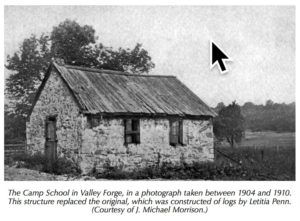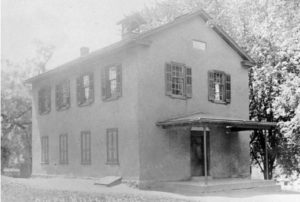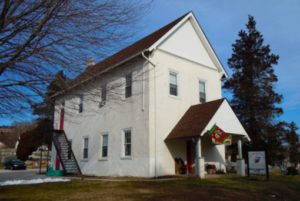Early schools in Upper Merion were located in private homes. One of the first schools in Upper Merion was Gulph School, a stone building, founded in 1696.
The Old Camp School located on Mount Joy, was a little log school founded by Letitia Penn with a desire to educate her neighbors’ children. Reportedly established in 1705, the school was eventually replaced by a stone structure which still stands in Valley Forge Park. During the encampment, the Old Camp School, which had been founded by Letitia Penn, was used as a hospital and smithy.
In 1725, the Union School, first erected as a log house in Matthew Roberts’ woods, was replaced by a stone structure which also served as the Upper Merion Township Building. Advised by Rev. Samuel I. Silus in 1733 to cease tutoring their children at home, he urged the Swedes to erect a common school just outside the Old Swedes Churchyard in Swedesburg.
Isaac Supplee had the Flint Hill School erected on his farm in 1745 for the education of the Supplee children and their neighbors. His school was closed about 1805 and later demolished. During the Revolution, the Henry School, a small public school, was built in 1776 between Port Kennedy and Valley Forge, but it was abandoned in 1869. The Holstein or Centre School, built about 1814, was located on the lower side of the Bridgeport and King of Prussia Road. It closed in the late 1800’s.
Sometime before 1825, in a little room over a spring house in Gulph Mills, a Mrs. Sturgis ran a small school, the Sturgis School, for young ladies only.
Aptly named by the pupils, “Mud College” was a log school chinked with mud. Built primarily to educate the Hughes, Henderson, and Roberts children, it stood on the Roberts Farm at the corner of Gulph Road. After sending his older children away to school, wealthy George Nugent decided to educate his youngest children at home on his eighteen acre estate. In 1830, he built a magnificent two story stone structure, with four fireplaces in each room, and hired the Rev. George Shaw and family for the faculty of “Nugent College.” Lack of the hickory stick caused early dismissals and the closing for good ten years later.
In 1836, two years after the common school law was passed by the Commonwealth, Upper Merion Township had seven schools, seven male teachers, and 173 male and 112 female students.
To hear what happened next, join the King of Prussia Historical Society on Saturday, September 9th for “The History of Upper Merion Schools”. The program begins at 2:00 pm at Christ Church (Old Swedes) Church Hall.
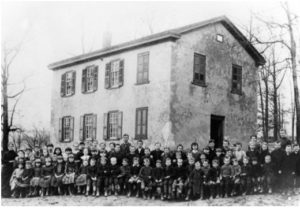
The Evergreen School formerly on Old Valley Forge Road in Port Kennedy. (Courtesy of the Upper Merion Township Library.)
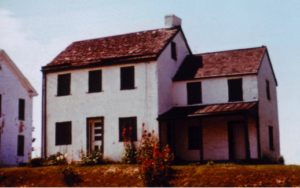
Union School and Schoolmaster’s Quarters formerly on Allendale Road and DeKalb Pike (US 202). (Courtesy of the Upper Merion Township Library.)

